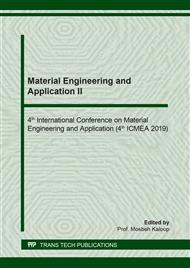p.335
p.340
p.346
p.355
p.363
p.369
p.375
p.381
p.387
Flow Field Analysis and Experimental Investigation of Electrochemical Etching
Abstract:
. Electrochemical etching is widely used to process refractory metals such as tungsten and molybdenum. Flow field is one of the crucial factors that influence the surface quality in electrochemical etching. In this paper, the electrochemical etching flow field was analyzed via FLUENT, the characteristics of flow field in electrochemical etching are studied, furthermore, the effects of four different outlet forms of electrolyte on flow field uniformity, electrolyte velocity and pressure distribution are investigated. Under the same electrolyte flow rate, the flow field characteristics of different outlet forms are analyzed by velocity vector diagram, pressure distribution nephogram, velocity and pressure curve diagram. The simulation results indicate that stable electrolyte velocity and uniform pressure distribution of flow field are obtained when the outlet form of electrolyte adopts the optimized flat. Finally, the fixture for this outlet form is designed and fabricated, and experimental verification is carried out, which shown that the flow field is uniform and the crystal plane of the workpiece is well-distributed which according with the process requirements.
Info:
Periodical:
Pages:
369-374
Citation:
Online since:
May 2020
Authors:
Keywords:
Price:
Сopyright:
© 2020 Trans Tech Publications Ltd. All Rights Reserved
Share:
Citation:


